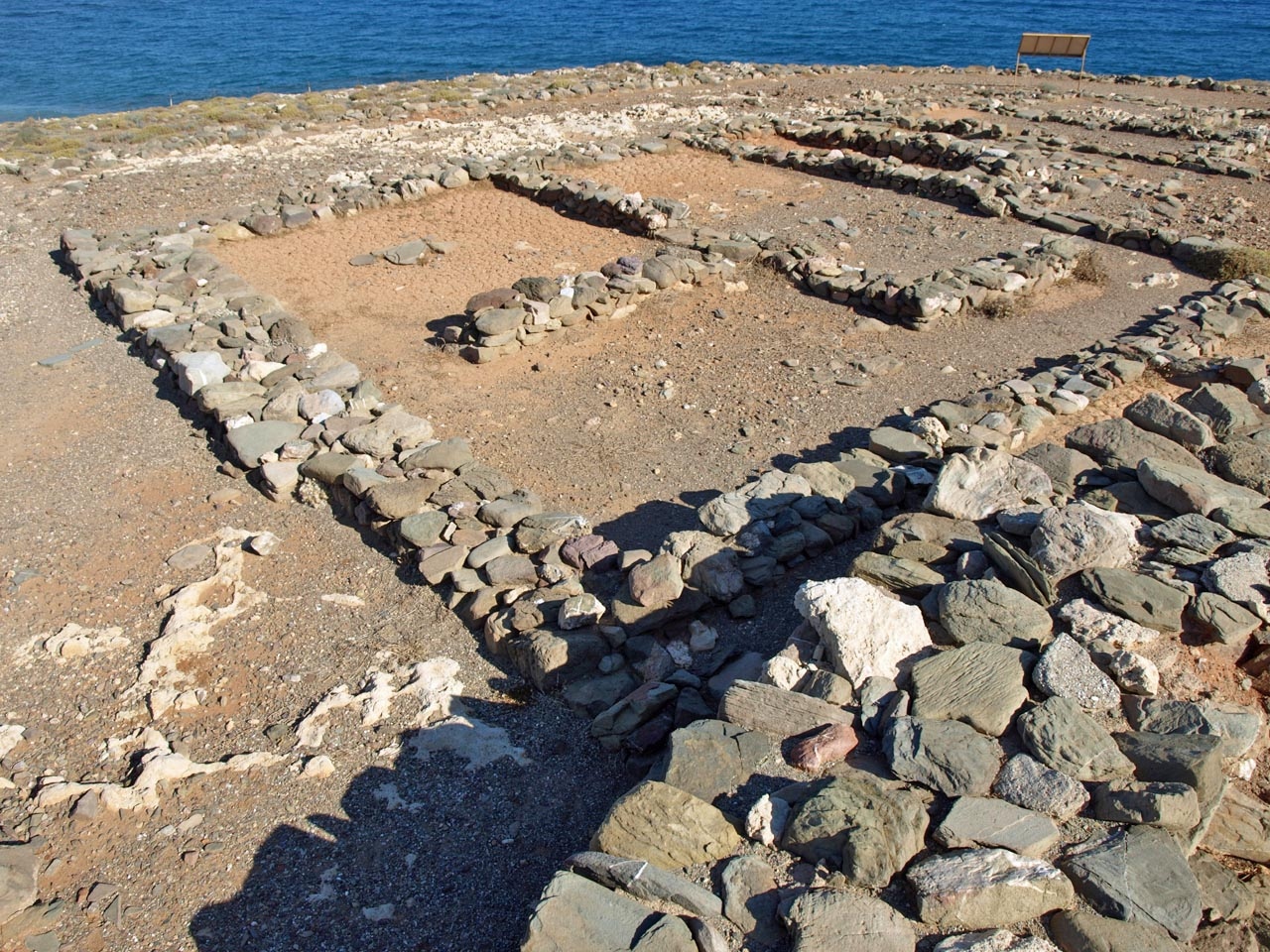Hagia Photia
Agia Photia (also Ayia Photia transcribed and Hagia Photia ) is an archaeological site of the Minoan period in Crete (Greece). Both a Minoan settlement and a burial ground was discovered.
Location
Agia Photia is located on the north coast to the east of the island near the small town of Sitía on a small hill close to the sea.
Minoan cemetery
A total of 252 graves were found. The graves were dated mostly to FM I, a few, however, to FM II with 252 graves seem to be Agia Photia been a major necropolis. However it is a strong contrast to the FM I - grave types of other regions. In contrast to the tholos tombs, circular domed tombs, which occurred mainly in southern Crete, the tombs of Agia Photia were dug into the rocks and artificial caves are so very close. In addition, the grave goods found to have a strong Cycladic influence. It can be assumed, therefore, even that there was Cycladic in Agia Photia residents.
Minoan settlement
Not far from the cemetery, a complex of several buildings was exposed on a headland, in contrast to the necropolis considerably later period, from MM IA (ca. 20th century BC) comes from. The excavation area showing the foundations of a large rectangular, originally fortified building with a central courtyard. This well- agricultural purposes serving buildings with 37 rooms can already be interpreted as a prototype of the Minoan palace because of these characteristics. Because of the location of the premises is believed that the building complex was inhabited by several Minoan families that together formed a clan.










